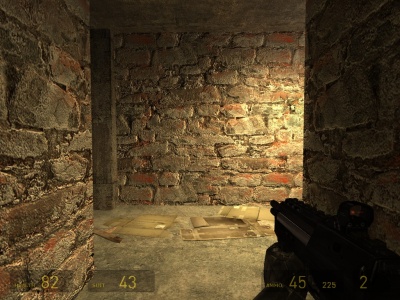Bump mapping
< Pl
Jump to navigation
Jump to search
This article needs more  links to other articles to help
links to other articles to help  integrate it into the encyclopedia. Please help improve this article by adding links
integrate it into the encyclopedia. Please help improve this article by adding links  that are relevant to the context within the existing text.
that are relevant to the context within the existing text.
January 2024
January 2024
(Pochodzi z Wikipedia: Mapowanie wypukłości)
Mapowanie wypukłości (ang. bump mapping) — technika teksturowania, która symuluje niewielkie wypukłości powierzchni, bez ingerencji w geometrię obiektu trójwymiarowego.
Technika polega na użyciu tekstury, która nie jest jednak bezpośrednio wyświetlana, ale powoduje lokalne zakłócenia (obrót) wektora normalnego. Ponieważ każdy model oświetlenia (np. oświetlenie Phonga) w jakiś sposób wiąże kąt pomiędzy promieniem światła, a wektorem normalnym, to rezultatem zakłóceń jest pojawienie się na obrazie złudzenia nierówności powierzchni. Efekt jest bardzo przekonujący, większość ludzi nie zwraca uwagi na fakt, że brzegi obiektu pozostały „niezakłócone".
